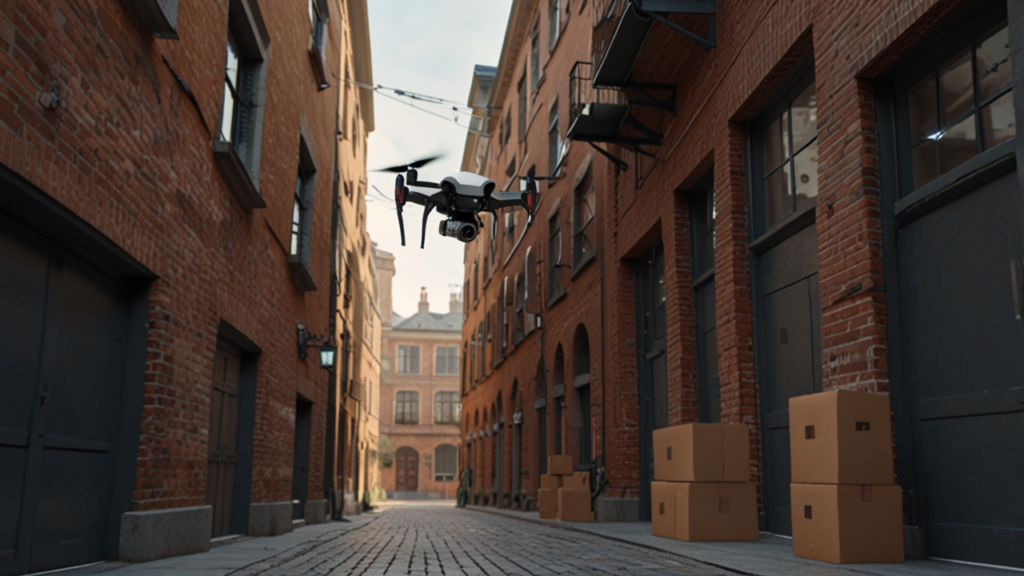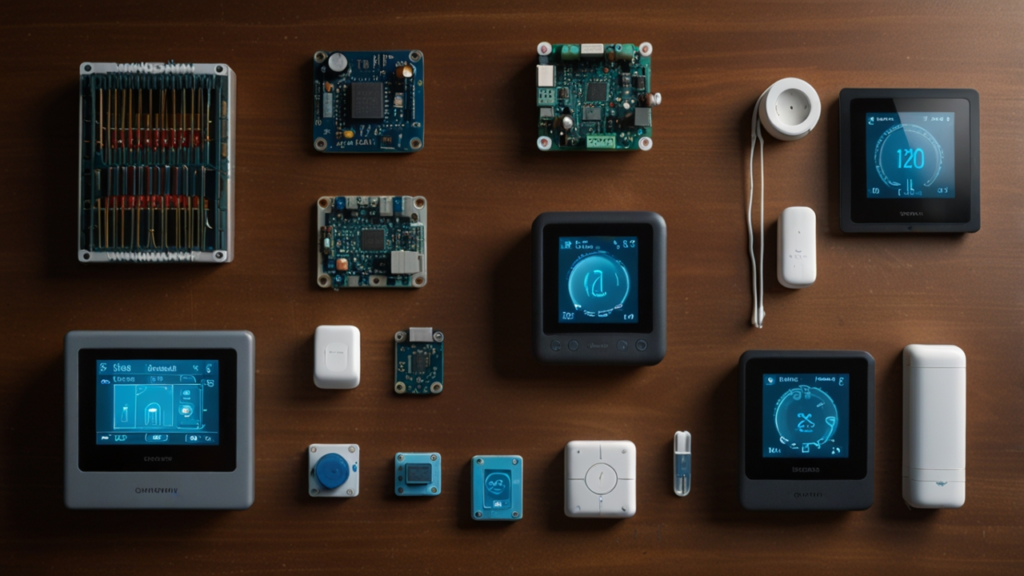Internet of Things: 8 Powerful Applications
The digital age has given rise to a revolutionary shift in technology, enabling countless devices to autonomously share information. This breakthrough has transformed not only consumer gadgets but also entire industries. Today, advanced networks connect everyday objects, improving efficiency and decision-making on a global scale.
At the heart of this innovation is a dynamic system that seamlessly integrates many sectors, from healthcare to industrial production. As technologies become increasingly accessible, you are witnessing a change that touches every aspect of our lives. This transformation invites you to explore how interactive systems have reshaped modern society.
Driven by relentless innovation and supported by emerging standards, these modern systems are set to redefine efficiency and productivity. With a focus on smart technology and real-time data, the digital world now offers improved connectivity and sustainability. How will these advancements influence your daily life?
Table of Contents
- Introduction to Internet of Things
- Evolution and History of Internet of Things
- How Connected Devices Enhances Internet of Things
- Ubiquitous Sensing Systems and Their Applications
- Real-World Case Studies of Internet of Things
- Machine Communication in Modern Internet of Things Solutions
- Future Trends: Internet of Things Data Ecosystem and Beyond
Introduction to Internet of Things
Overview and Significance
The Internet of Things has emerged as one of the defining shifts of recent decades. This technology connects everyday objects using embedded sensors and communication protocols. In doing so, it paves the way for smarter living and innovative industrial processes.
Experts agree that the system has transformed data transmission and decision-making worldwide. For more detailed context on the historical background, check out a detailed study on IoT history. Have you noticed increased device connectivity in your own environment?
This introductory look highlights how enhanced networks have reshaped industries and day-to-day life. As you reflect on the past and future, consider the impact on both small communities and global enterprises.
Key Concepts and Terminology
In discussing this topic, understanding basic terminology is essential. The system relies on sensors, gateways, and cloud services to process massive information flows. Each component works together to create a seamless data-sharing network.
The technology is based on a distributed architecture where data travels across multiple channels. For more insights, visit brief history of IoT for an in-depth overview. How familiar are you with these technical concepts?
Each step of the process—from data collection to analysis—demonstrates the system’s integral role in digital transformation. Remember, every connected entity contributes to the overall functionality, creating value at every level.
Also, explore additional information on these topics through the tag link IoT (Internet of Things).
Evolution and History of Internet of Things
Historical Milestones and Developments
Tracing the roots of this networked technology, you discover that early machine-to-machine communication started in the 1970s. Wireless and cellular networks established the means for modern connectivity. These initial breakthroughs set the stage for further evolution.
The 1990s saw the first internet-connected devices emerge alongside early smart home concepts. Key figures like Kevin Ashton are credited with coining the term in 1999, marking a pivotal moment. For more context, explore a timeline of IoT milestones.
This evolution reveals a progression from theoretical designs to practical, scalable networks. How does learning about these milestones influence your view on technological innovation?
Technological Advancements and Influences
Significant leaps were made with the advent of cloud computing and big data analytics between 2010 and 2015. These advancements allowed for more efficient aggregation, storage, and analysis of data. This period saw investments in innovative solutions and startups.
The evolving infrastructure reached a new phase with the creation of specialized IoT platforms by tech giants like AWS and Microsoft Azure. For further reading on these pivotal moments, visit information on tech evolutions. What major innovations do you believe were most influential?
The rapid adoption of new wireless standards, including 5G, enhanced the overall performance and reliability of these networks. Each new development contributed to making data processing more effective and accessible across industries.
Also, see a related tag link here: Smart Home Technology.
How Connected Devices Enhances Internet of Things
Integration of Device Networks
It is clear that the effective integration of device networks is central to the system’s success. Modern systems rely on small, low-power gadgets for continuous data collection. These devices work in tandem creating a robust, interconnected web.
By enabling real-time monitoring and control, such devices transform traditional industries. For instance, employing networked sensors leads to better predictive maintenance in plants. Does your organization benefit from these interconnected systems?
Improved connectivity ensures that data flows seamlessly from the field to decision-makers. For more technical insights, you might visit brief historical insights on connectivity breakthroughs. This tag link also invites further exploration: Smart Devices.
Benefits and Challenges of Integration
The system offers tangible benefits such as energy efficiency and optimized performance. However, it also faces challenges like managing device heterogeneity. Achieving interoperability remains one of the key technical challenges.
Addressing these challenges requires innovative design and robust data security practices. Developers strive to balance connectivity with efficient power usage. What challenges have you observed in integrating multiple systems?
Besides addressing technical hurdles, the focus is also on streamlining user experience. This balance ensures both performance and security in the operational network. For further reading on integrated systems, consider additional Tech Developments.
Ubiquitous Sensing Systems and Their Applications
Sensor Technologies and Data Collection
Modern networks rely on inexpensive yet effective sensor systems. These sensors capture environmental changes such as temperature, humidity, and motion. The data is essential for making informed decisions in real-time.
This data collection is critical for understanding system performance and addressing operational challenges. With advances in miniaturization and low-power technologies, these sensors have become indispensable. Have you encountered innovative sensor applications in your daily life?
During this evolution, manufacturers have introduced sensors that reliably monitor conditions across diverse environments. Each component plays a critical role in forming a complete picture of the ambient environment.
For more technical details, visit future trends in sensor systems. Additionally, discover more via the tag link Innovative Solutions.
Applications Across Industries
The value of these sensing systems is demonstrated by their vast application spectrum. In healthcare, sensors monitor patient vitals continuously, enhancing patient care. In agriculture, they help optimize irrigation and monitor soil conditions for better yields.
In urban planning, sensor data improves traffic management and energy consumption, contributing to sustainable development. These applications validate the technology through measurable improvements and cost reductions. What industry application has impressed you the most?
Government and private sectors alike are leveraging these systems to drive smarter city initiatives. Such initiatives ensure that resources are used efficiently while maintaining ecological balance. More information is available in various online resources detailing these advancements.
Real-World Case Studies of Internet of Things
Case Studies in Healthcare and Manufacturing
Practical implementations reveal transformative benefits across multiple sectors. In hospitals, networked sensor systems allow for real-time patient monitoring, reducing emergency response times. For example, IoT-driven remote patient monitoring drastically lowers hospital readmission rates.
In manufacturing, sensors powered by advanced analytics predict equipment failures before they occur. Predictive maintenance saves costs and increases operational efficiency. Have you experienced such improvements in safety or efficiency in your work?
These case studies underline how technology can drive efficiency while saving valuable time and resources. External reports, such as those on industry analysis, provide further evidence of these successes.
Comparison of Global Implementations
The practical aspects of this technology are further clarified through comparative studies across regions. In smart cities like Barcelona, sensor networks have reduced energy costs by 30% and water consumption by 25%. Similarly, precision agriculture in various countries has boosted crop yields and reduced resource use significantly.
A comparative table below summarizes these innovations with specifics on regional impact:
Comprehensive Comparison of Case Studies
| Example | Application | Impact | Region |
|---|---|---|---|
| Remote Patient Monitoring | Healthcare | Reduced readmissions by 20% | North America |
| Predictive Maintenance | Manufacturing | Improved efficiency by 25% | Europe |
| Smart Grid Management | Energy | Reduced outages by 60% | Asia |
| Precision Agriculture | Agriculture | Increased yields by 15% | Global |
| Smart Lighting Systems | Urban Planning | Energy savings of 30% | Europe |
These real-world examples underscore how strategic integration drives success across sectors. For more detailed case studies and innovative examples, consult additional resources. Do these examples resonate with your experiences?
Machine Communication in Modern Internet of Things Solutions
Protocols and Communication Architectures
Efficient data exchange is built on modern communication protocols. These protocols facilitate rapid data transfer between numerous nodes in the network. Today’s systems incorporate advanced network standards to ensure reliability and security.
Communication architectures such as edge computing help process data locally, reducing delays. This localized handling is crucial for mission-critical operations. Have you considered how reducing latency impacts decision-making in your processes?
Standards like WiFi, Zigbee, and Bluetooth are widely deployed, each offering distinct advantages for specific applications. For further technical specifications, visit IoT definitions and standards. Each protocol contributes uniquely to the robust performance of these systems.
Benefits of Real-Time Communication
Immediate data processing is essential for industries where seconds count. For example, in automotive safety, real-time alerts prevent accidents by enabling instant reactions. This rapid communication also helps in inventory control and smart logistics.
Real-time information empowers users to make data-driven decisions quickly. Enhanced responsiveness can translate into significant competitive advantages. What benefits have you observed when systems respond immediately to operational changes?
By minimizing delays, organizations can dynamically adjust strategies and operations. This tight integration reinforces the overall efficiency and effectiveness of the network. Consider how your daily operations might improve with such real-time system capabilities.
Future Trends: Internet of Things Data Ecosystem and Beyond
Emerging Technologies and Integration
The future will likely see an even greater merging of smart networks with artificial intelligence. Data-driven solutions will become more autonomous as algorithms evolve. Enhanced processing will empower faster, localized decision-making.
The integration of satellite, 5G, and blockchain technologies promises more reliability and security. As these developments mature, reliability and scalability will advance considerably. How do you envision these emerging technologies affecting your industry?
This evolution points to systems that are more resilient and responsive. With increased automation comes improved efficiency and operational agility. The focus will continuously shift toward smarter, more connected ecosystems.
Security, Sustainability, and Global Impact
With expansion, concerns regarding security and privacy will intensify. Advanced threat detection and robust encryption protocols will become standard. Moreover, environmental sustainability will play a critical role in shaping future deployments.
Strategies focusing on energy conservation and resource optimization are expected to reduce operational costs significantly. Such initiatives are already showing promising results, with experiments demonstrating up to 30% reduction in energy usage for commercial buildings. Does your organization have plans to address these challenges directly?
Global standards and regulatory frameworks will help ensure consistency and security. With a proactive approach, the technology will continue expanding without compromising ethical practices or safety. The drive for sustainability will simultaneously foster innovation and responsible growth.
Internet of Things Excerpt Insight
This remarkable exploration highlights a journey of transformation in the digital realm. Drawing on decades of innovation, the narrative illustrates how pervasive systems have subtly redefined operational possibilities across industries. The interplay of robust networks and agile data management has ushered in a new era where efficiency meets predictive intelligence.
The narrative emphasizes key turning points that revolutionized operational paradigms and improved user experiences worldwide. A dynamic blend of creative strategy and technical precision paves the way for enhanced control and resource management. As ideas converged with real-world applications, fresh perspectives emerged that continue to inspire future directions in technological evolution.
One unique insight arises from the observation that practical implementations are not merely about speed or connectivity—rather, they unlock a deeper potential for innovation that reimagines traditional workflows. This insight invites readers to reflect on how subtle changes in architecture can yield transformative impacts. It inspires a continuous quest for excellence that pushes boundaries and challenges assumptions.
In this evolving landscape, innovative frameworks build bridges between theoretical constructs and practical benefits. The resulting blend of reliability and ingenuity ultimately sets the stage for enduring change. As you ponder these ideas, allow yourself to be inspired by the relentless pursuit of progress.
This reflective narrative not only summarizes essential trends but also motivates forward-thinking approaches. It is a reminder that each breakthrough offers a glimpse of what is yet to come. Such perspectives will undoubtedly fuel the next generation of transformative ideas.
FAQ
What defines the Internet of Things?
The technology is defined by a network of physical objects embedded with sensors, software, and connectivity, allowing them to exchange data and interact. It represents a convergence of digital and physical realms.
How did this technology evolve historically?
Its evolution began in the 1970s with early machine-to-machine communications and expanded with the advent of the internet, wireless networks, and cloud computing, leading to today’s advanced systems.
What challenges affect integrated device networks?
Challenges include managing heterogeneous devices, ensuring interoperability, data security issues, and reducing communication latency, all of which require innovative solutions.
How is data processed in real time?
Data is processed locally through edge computing and high-speed networking protocols, ensuring immediate response and minimal delays for critical applications.
What future innovations are expected?
Future trends include deeper AI integration, improved sustainability practices, enhanced security protocols, and the expansion of high-speed connectivity through technologies like 5G and satellite communications.
Conclusion
This exploration into network-enabled technology shows a profound impact on industries and everyday life. With advances in history, integration, and real-world applications, it is clear that transformative systems are essential for modern innovation.
From the evolution of device networks to the future emergence of smart data frameworks, the journey is ongoing. What can you do to leverage these transformative technologies in your environment?
We encourage you to share your thoughts, experiences, and insights. For more information on these trends, feel free to explore additional resources or Contact us. Your engagement can help fuel future innovations and drive smarter solutions.
Thank you for reading and participating in this discussion. Have you experienced any of these changes in your daily practices?
Also, check out the latest insights on Smart Tech for even more industry updates.
Discover more from Fabelo.io
Subscribe to get the latest posts sent to your email.



